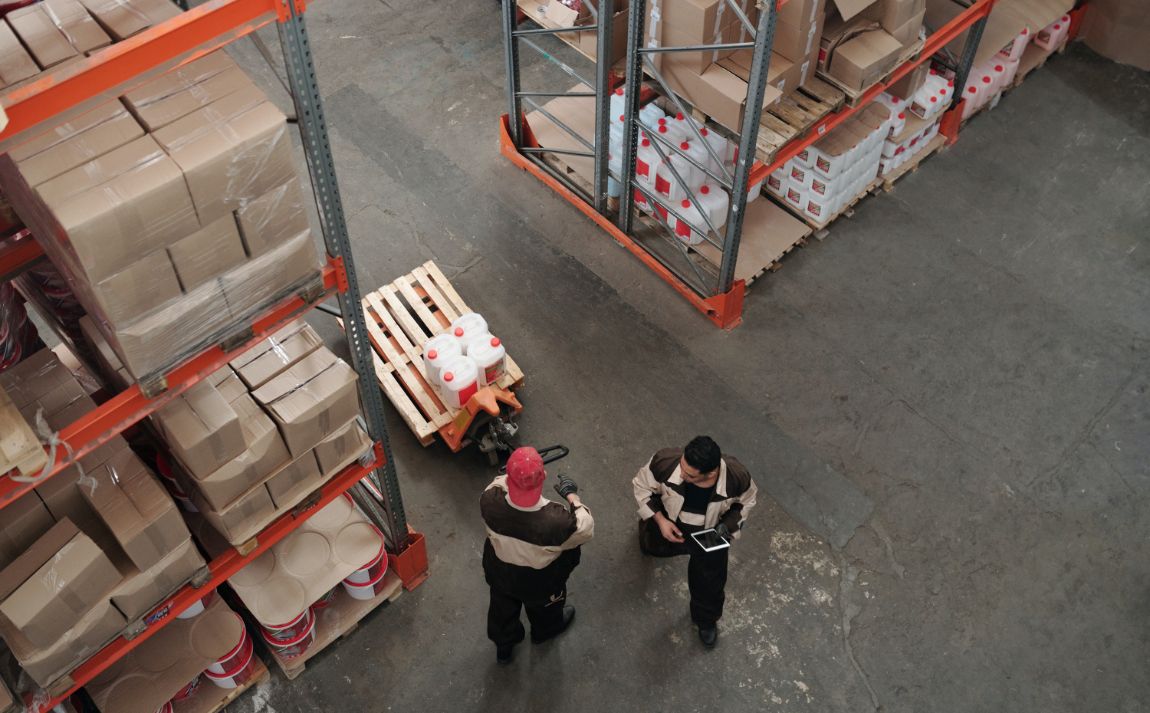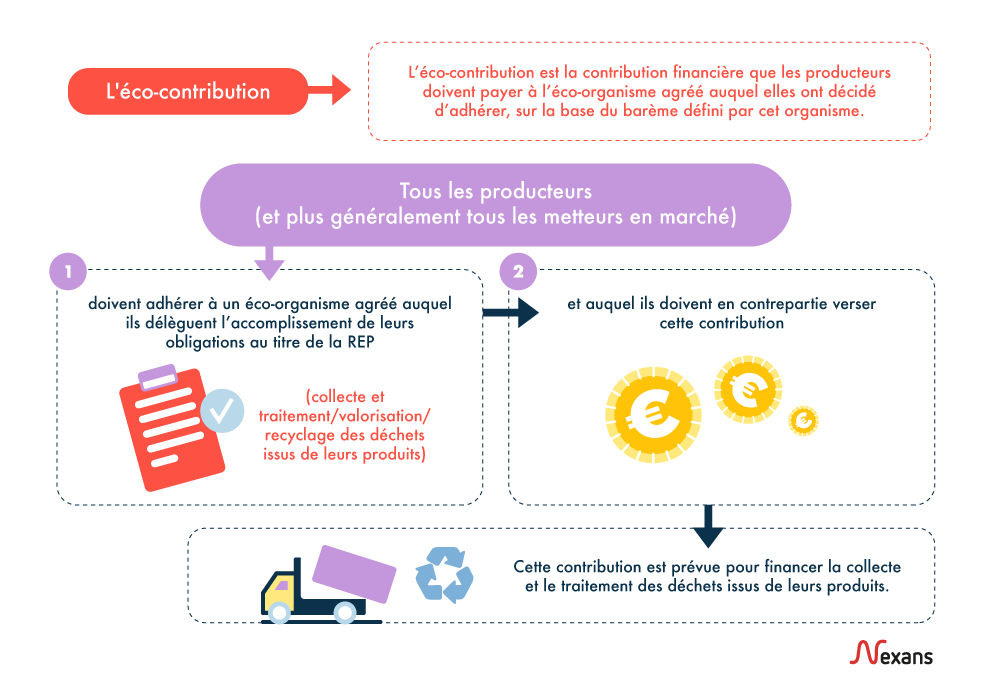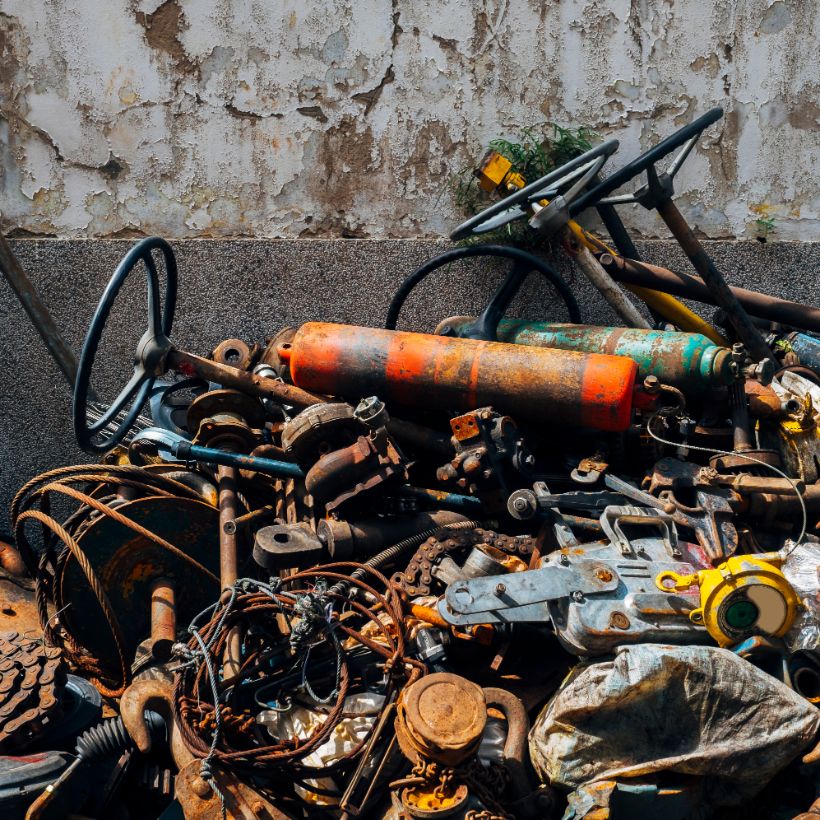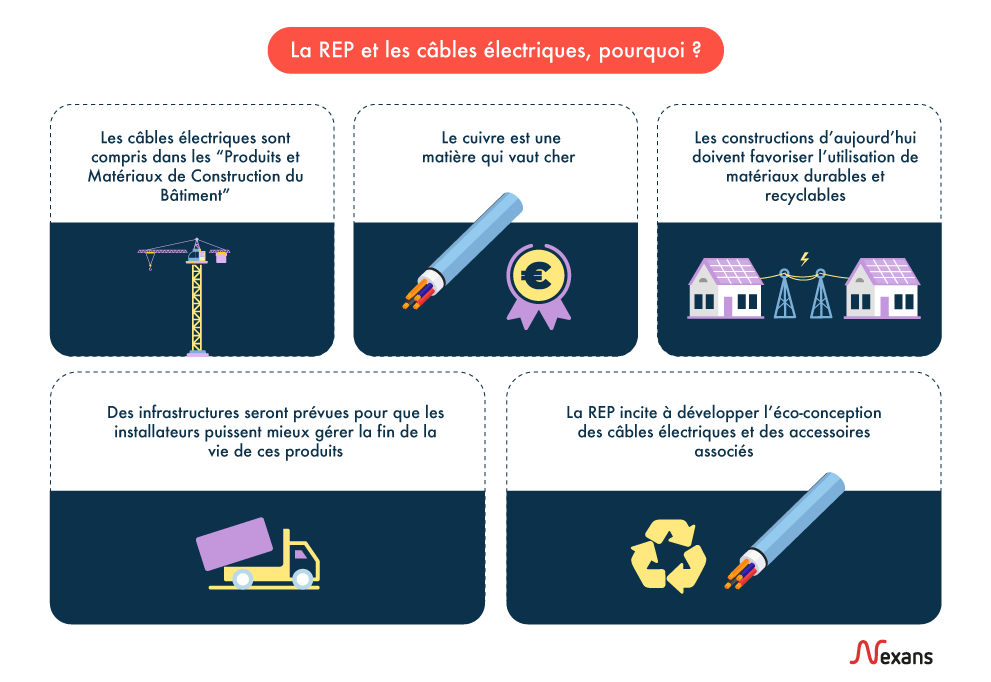Réduire mon impact
What is EPR (Extended Producer Responsibility)?


EPR (Extended Producer Responsibility), as its name suggests, makes producers responsible for managing the end-of-life of their products. In other words, companies that place products on the market are responsible for them throughout their life cycle. As such, they must integrate the cost of preventing and managing the waste generated at the end of their products' lives into the final price of the latter.
To meet their obligation to collect and treat end-of-life waste, they delegate these tasks to approved eco-organizations. The ultimate aim is to move towards a more circular economy through greater waste recovery and recycling, to the detriment of landfill disposal. What about electrical cables? Nexans takes stock.
EPR principles and context
EPR, or Extended Producer Responsibility, first appeared in French law in 1975. In its first version, EPR simply stated the obligation of producers, importers and distributors of certain products to contribute to the elimination of waste generated by these products.
It wasn't until 1992 that the first EPR channels were created, notably with the decree on household packaging. Many other products were subsequently covered by EPR schemes.
Today, it's the AGEC law (anti-waste law for a circular economy), enacted in 2020, that is speeding things up: it's no longer just a question of treating waste, but also of limiting it by promoting eco-design and extending product lifetimes.
The production of electrical cables is now concerned by this provision, since the AGEC law has created new EPR channels, including one covering "Building Products and Materials".
The principle of EPR is to transfer responsibility for managing the waste generated by their products to the marketers (producers or importers). It is up to them to find solutions to recycle all or a significant proportion of the waste from their products, and to design increasingly sustainable products today.
What is eco-contribution?
The eco-contribution is the financial contribution that producers must pay to the approved eco-organization they have decided to join, on the basis of the scale defined by this organization.
All producers, and more generally all marketers, must join an approved eco-organization to which they delegate the fulfillment of their EPR obligations (collection and treatment/recovery/recycling of waste from their products), and to which they must in return pay this contribution. This contribution is intended to finance the collection and treatment of waste from their products.
The eco-organizations are approved by the public authorities, and take responsibility for EPR obligations on behalf of industrial producers and marketers, i.e. for the end-of-life of the products concerned.
Electrical cables for the building industry, for example, are part of the EPR program for Building Products and Materials (PMCB).
This new EPR sector, instituted by the AGEC law, will only come into force on January 1, 2023, and as the eco-organizations concerned are still in the process of being approved, the eco-contribution scales are not yet known.
However, here are the potential new eco-organizations to which producers in the building sector will be able to adhere:
- Valobat: 26 founding shareholders, including Nexans
- Ecominero: dedicated to producers of mineral products. The Union nationale des Industries de Carrière et des Matériaux de Construction (Unicem) is behind it.
- Eco-mobilier: recycling of used furniture, now diversifying into all building products and materials.


By 2024, the major distributors of electrical equipment will have, on some of their sales products (the largest), waste skips, where craftsmen installers can deposit their PMCB waste, including cables, from renovation sites, so that they can be recycled.
How does Building EPR work?
As mentioned above, manufacturers and importers who place PMCBs on the market must first join an eco-organization. They must then pay an eco-contribution to the eco-organization of their choice. These eco-contributions are used to remunerate companies specializing in waste management: collection, sorting and massification, treatment, recovery, etc.
The construction industry generates a great deal of waste, particularly during demolition or major renovation projects. What's more, cables are products that generate waste, because they can't be used down to the last centimeter.
There are therefore major issues at stake in the reprocessing of construction waste. Firstly, it involves processing a large volume of waste. Secondly, you have to deal with a wide variety of wastes (which are more or less easy to recycle), and not all of them can be processed in the same way.
Why EPR and electrical cables?
Electrical cables are quite simply part of the building industry. So it's only logical that they should be included in the "Building Products and Materials" category, and that cable manufacturers should therefore be subject to EPR requirements.
Electrical cables are made up of copper conductors, and are therefore highly valuable: copper is an expensive material.
What's more, with the RE 2020 law due to come into force in 2022, the EPR applied to electrical cables takes on its full meaning: today's constructions must favor the use of sustainable and recyclable materials.
In the same vein, the renovation of an electrical installation sometimes means having to dispose of old electrical cables: thanks to EPR, infrastructures will be provided so that installers can better manage the end-of-life of these products.
Finally, for producers, EPR encourages eco-design of electrical cables and associated accessories.
Nexans cable waste does not end up in the environment, and is already widely collected and recycled. Electrical wreckers and installers entrust their waste and cables to specialized circuits for treatment and recovery.
Find out more about eco-design:

The risk of higher prices for construction products and materials as a result of the introduction of EPR in the building sector is questionable. It is still too early to draw up an economic assessment of the introduction of EPR, but we can assume that the additional cost will remain modest. What's more, the introduction of EPR will be gradual: the ramp-up in terms of collection and recycling rates is expected to take several years.